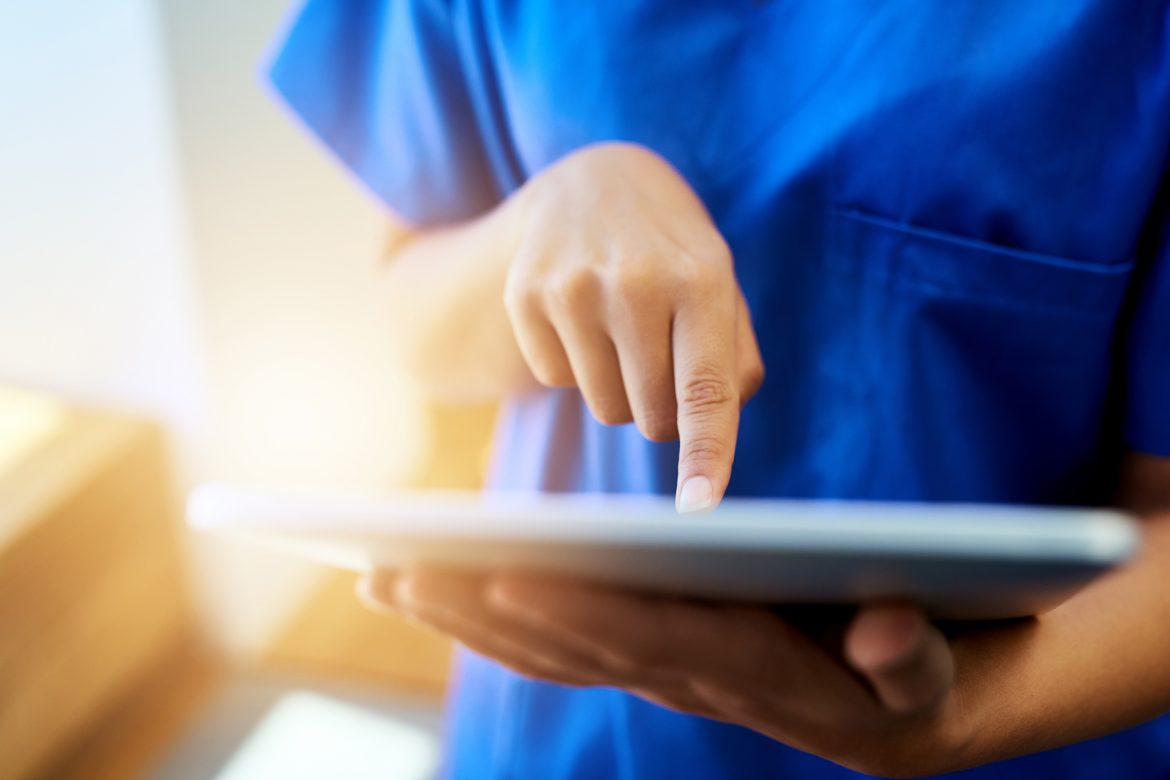The world changes and so do habits. Our healthcare systems should offer care of the highest quality by utilising modern methods. This includes the ability to respond better to our healthcare needs, technological development and the special competences required by our systems.
Thus, transformation is necessary from time to time. No transformation happens overnight, however, and it will likely be met with opposition as well. By understanding the transformation, the situation is easier to appropriate and implement in an organisation, however. One tangible stage of the transformation now in the forefront is the time factor related to documentation.
A Computer Takes up Plenty of Care Time
Nurses spend most of their time at work recording patient data. An established practice in the field of nursing has been to record data manually while with the patient and to document the same data later into the patient data system via computer. In the event of an urgent care situation, however, there may not be time to type in data on the computer until several hours later. Then the data will no longer be real-time data. In addition to this, the commotion at workstations along with the small number of workstations and data system operating problems brings its own challenge to documentation.
“In the event of an urgent care situation, however, there may not be time to type in data on the computer until several hours later.”
Nurses fear that using a computer is taking too much time for contact with the patients, in addition to which nurses find documentation a flustering, exasperating and confusing experience [1]. This fear is not unjustified since according to an article published by Helsingin Sanomat, the leading Finnish newspaper, more than 50% of the nurses spend four hours of every shift working on the computer [2]. Nurses have also been interviewed about their documentation experiences [3]:
“There’s a lot to remember. You have to make entries using many different forms. There’s no time for accurate documentation. Due to lack of time, some things are not documented.”
“Documentation takes up an awful lot of time. You end up on the computer for the better part of the day anyway.”
“A lot of working time is spent on the computer. That leaves less time to spend with patients at the unit.”
“It takes too long. I don’t have enough time to be with the patients.”
The interviewed nurses think that point-of-care documentation is an important tool and a significant part of nursing. Proper information flow is of significance in that this is how the matters of essence are transferred from one nurses to the next. Documentation also unifies patient care, enabling its continuity. [3]
Documentation via Mobile App
The good news amid the documentation problems is that under current technology mobile documentation is possible as well. Thus, wireless browsing and recording patient data can be accomplished while with the patient directly with the patient data system via smart phone or smart device.
It is no longer necessary to leave the room in order to review previous values or enter new ones. There is more time for what is essential, namely taking care of the patient. According to our research, not making double entries saves up to more than 180 hours per month per unit. Furthermore, through mobile documentation, the data is available in real time to everyone participating in the care, without the information flow between nurses being broken in the meantime.
Awareness of the benefits of mobile documentation is rising in the field of healthcare. The next step is the transformation process itself.
References:
[1] Kuusisto & Saloniemi 2010: Taidot, asenteet vai tietokoneet? Sähköisen kirjaamisen esteet sosiaali- ja terveydenhuollossa
[2] Helsingin Sanomat 2016: Kysely: Kolmannes lääkäreistä käyttää yli kuusi tuntia työvuorosta tietokoneisiin
[3] Haapamäki & Hyry 2015: Kirjaamisen kehittyminen sairaanhoitajan työssä
